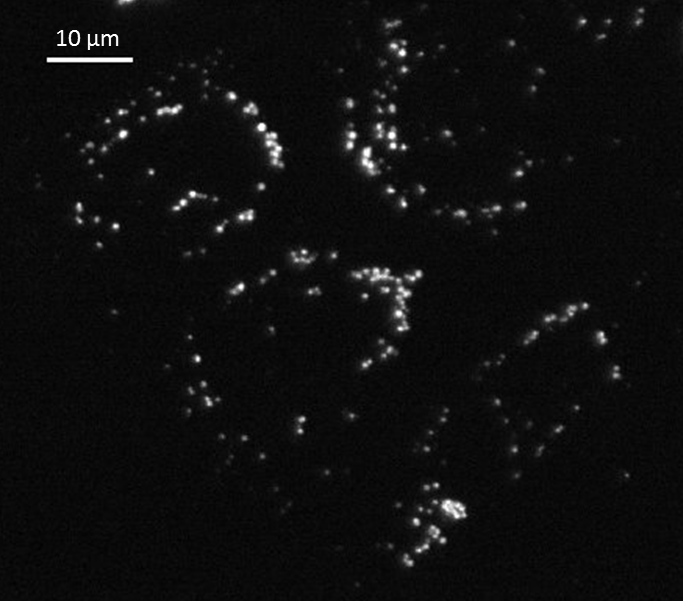The Cave of Wonders: My Life As A Microscopist
As a postdoc in the Membrane Transport Biophysics Unit at NINDS, I’ve spent the past several years studying lysosomal pH. For me, that means spending a lot of my time in a pitch-black room, a room that I refer to as my cave.
Lysosomes are organelles that basically serve as the stomachs of cells, breaking down large molecules into smaller components. Like your stomach, lysosomes need to be at an acidic pH to function properly. How lysosomes get to such an acidic pH and maintain that pH isn’t fully known, so my experiments are an effort to better understand which proteins are responsible for the acidification process.
With small interfering RNA (siRNA), I first knock down the expression of certain proteins in the lysosomal membrane that are thought to be a part of the acidification process, and then I measure the pH of the lysosomes in those cells. I’m looking to see if there is any change in pH when I knock down a protein, which would indicate the protein may have a role in acidification.
To capture the information that our lab is looking for, I use a fluorescent dye that is very light sensitive, so the microscope room where I take images has to be as dark as possible. Here is an example of the result, taken using a 63X microscope objective:

Lysosomes in siRNA treated U-2 OS cells imaged using a wide-field microscope with a CCD camera
I’m currently working on writing a paper of all my siRNA results, so I can’t divulge much at the moment, but hopefully I can share something soon!
Related Blog Posts
This page was last updated on Monday, January 29, 2024
